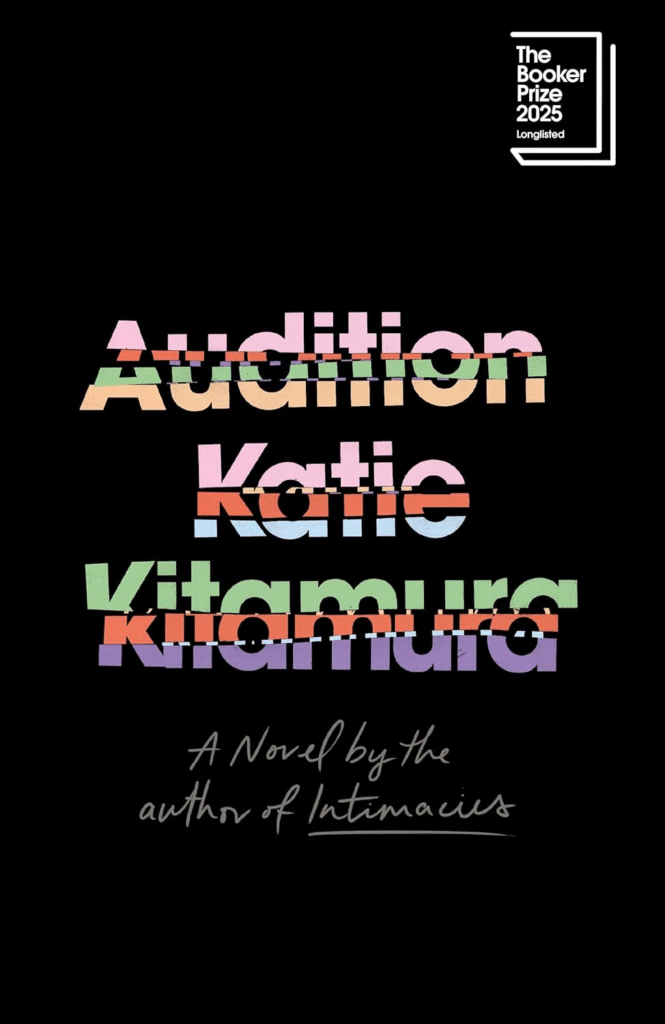Sarat Chandra Chattopadhyay’s works have excelled linguistic barriers, earning him international recognition through translations into numerous languages. His profound exploration of human emotions and social issues has found resonance with readers around the world. In 1894, Sarat Chandra Chattopadhyay passed his Entrance Examination (public examination at the end of Class X) and enrolled in Tejnarayan Jubilee College. There, he developed a keen interest in English literature, reading works such as “A Tale of Two Cities” and “David Copperfield” by Charles Dickens, among other novels. He also organized a children’s literary society in Bhagalpur, which produced a handwritten magazine. Unfortunately, two years later, his formal education came to an abrupt end because he could not afford the twenty rupees examination fee. Despite this setback, he continued to read and write productively, with many of his works later translated into English, bringing his stories to a global audience.
Sarat Chandra Chattopadhyay was born on September 15, 1876, in Debanandapur, a small village in Bengal, India. He hailed from a modest family background; his father, Motilal Chattopadhyay, was an unfulfilled writer, which led to financial instability in the family. Despite these hardships, Sarat Chandra’s determination to learn and his love for literature flourished. He struggled to master the English language, initially learning it in a non-formal setting and later through self-study, immersing himself in English novels and classics. His perseverance paid off, and he eventually became proficient in English, which significantly influenced his literary career and enabled his works to be translated for a wider audience.
English Translations of Sarat Chandra Chattopadhyay
Many of Chattopadhyay’s novels and short stories have been translated into English, making his work accessible to a global audience. some of his notable books and stories translated into English include:
Devdas: This tragic love story has been translated multiple times, with various editions available worldwide. The poignant tale of unrequited love and societal constraints has struck a chord with international readers.
Parineeta: The novel’s exploration of love, duty, and societal norms has made it a favorite among readers globally. Translations have brought its timeless narrative to a wider audience.
Srikanta: This introspective journey of the protagonist has been translated into English, allowing readers to delve into Chattopadhyay’s rich narrative and character study.
Charitraheen (Characterless) (1917): This novel explores the complexities of human relationships and societal norms through the lives of its protagonists, Savitri, Kiranmayi, and Satish. It delves into themes of love, betrayal, and morality, challenging societal judgments of character.
Pather Dabi (The Right of Way) (1926): This revolutionary novel follows the story of Sabyasachi, a leader of an underground movement against British rule. The book was banned by the British government for its incendiary content but later became a symbol of resistance and nationalism in India.
Bindur Chhele (Bindu’s Son) (1913): This story highlights the struggles and resilience of a widow, Bindu, and her son, encapsulating the societal challenges faced by women during that era. It portrays the hardships and emotional battles of the characters with sensitivity and depth.
Datta (1917): The novel centers around Bijoya and Naren, exploring themes of love, duty, and societal expectations. Bijoya’s internal conflict between her love for Naren and her duty to her family forms the crux of the narrative, reflecting the societal norms of the time.
Bipradas (1919): This story narrates the life of Bipradas, a zamindar, and his efforts to navigate personal and familial responsibilities. It delves into the complexities of familial bonds and the sacrifices made for the greater good of the family.
Ramer Sumati (Rama’s Good Sense) (1914): A touching tale of a mischievous boy, Rama, and his journey towards maturity and responsibility. The story reflects on the innocence of childhood and the lessons learned through life’s experiences.
Mahesh (The Drought) (1918): This poignant short story revolves around Gafur, a poor peasant, and his beloved bull, Mahesh. It poignantly depicts the bond between man and animal and the devastating effects of drought and poverty.
Shesh Prashna (The Final Question) (1931): This philosophical novel delves into existential questions and the quest for meaning in life. The protagonist, Kamal, challenges traditional beliefs and explores new ideologies, reflecting Sarat Chandra’s own questioning spirit.
Nishkriti (Deliverance) (1913): The story examines the dynamics of a joint family and the tensions that arise within. It portrays the struggles for autonomy and the desire for personal freedom against the backdrop of familial obligations.
Arakshaniya (The Woman Unprotected) (1916): This novel addresses the plight of women in society, focusing on the challenges faced by the protagonist, Surobala, who is abandoned by her husband. It brings to light the societal pressures and vulnerabilities of women during that time.
Sarat Chandra Chattopadhyay’s nuanced storytelling and deep social commentary have made his works timeless, earning him recognition both during his lifetime and posthumously. His contributions to literature continue to be celebrated globally.
Other Language Translations of Sarat Chandra Chattopadhyay
Chattopadhyay’s works have also been translated into several other languages, including French, Russian, Japanese, and Spanish. Sarat Chandra Chattopadhyay’s works have been translated into several other languages, including French, Russian, Japanese, and Spanish. Notable books that have been published in these languages are Charitraheen (Characterless), Pather Dabi (The Right of Way), Bindur Chhele (Bindu’s Son), Datta, Bipradas, Ramer Sumati (Rama’s Good Sense), Mahesh (The Drought), Shesh Prashna (The Final Question), Nishkriti (Deliverance), and Arakshaniya (The Woman Unprotected).These translations have broadened the reach of his stories, introducing them to diverse cultures and literary traditions.
French: French translations of Chattopadhyay’s works have brought his stories to European readers, who appreciate his exploration of universal themes.
Russian: Russian translations have allowed Chattopadhyay’s works to be appreciated in a country with a rich literary tradition, where his portrayal of social issues and human emotions resonates deeply.
Japanese: Japanese translations have introduced Chattopadhyay’s narratives to an audience that values emotional depth and intricate storytelling.
Spanish: Spanish translations have expanded his readership in Latin America and Spain, regions with a keen interest in socially relevant literature.
Global Influence of Sarat Chandra Chattopadhyay
Sarat Chandra Chattopadhyay’s influence extends beyond translations, as his works have inspired writers, filmmakers, and scholars worldwide. His exploration of social issues, human relationships, and moral dilemmas has universal appeal, making his stories relevant across cultures.
Literary Influence
International writers and scholars have drawn inspiration from Chattopadhyay’s works, acknowledging his impact on literature. His portrayal of societal constraints, gender roles, and individual struggles has influenced literary traditions and narrative techniques globally.
South Asian Literature: Sarat Chandra Chattopadhyay’s influence is particularly significant in South Asian literature, where his themes of social reform and humanism resonate deeply. Writers such as Bibhutibhushan Bandyopadhyay from India, Syed Mujtaba Ali from Bangladesh, and Manik Bandopadhyay have cited his work as an inspiration for their own storytelling. Additionally, Pakistani writer Saadat Hasan Manto admired Chattopadhyay’s ability to portray human emotions and societal issues.
Global Literary Circles: In literary circles worldwide, Chattopadhyay is recognized for his contribution to realistic fiction and social commentary. His works are often studied in comparative literature courses at universities such as Harvard, Oxford, the University of Tokyo, and the University of California, Berkeley, highlighting their global relevance. Renowned authors like Rabindranath Tagore and Mahasweta Devi have acknowledged Chattopadhyay’s influence on their work. His impact extends to international writers such as Pearl S. Buck, who appreciated his vivid depiction of rural life and human struggles.
Film and Television
Chattopadhyay’s stories have inspired international filmmakers, leading to adaptations in various languages and cultural contexts. His narratives, rich in emotional and social depth, have universal appeal, making them ideal for cinematic interpretation.
Bollywood and Beyond: Sarat Chandra Chattopadhyay’s literary works have not only captivated readers but have also found a prominent place in the cinematic world. Bollywood has produced several notable adaptations of his novels, including the iconic “Devdas” (1955, 2002), “Parineeta” (1953, 2005), and “Choti Bahu” (1971), based on “Bindur Chhele.” These films have achieved significant success, both critically and commercially. However, Chattopadhyay’s influence extends beyond Bollywood to film industries in other countries. For instance, the Bangladeshi film “Shesh Prashna” (The Final Question) has been adapted to reflect local cultural nuances while staying true to the original narrative. Additionally, “Datta” was adapted into a successful Bengali film in 1951 and a Bangladeshi film in 1989, both receiving critical acclaim.
Chattopadhyay’s stories have also made their way to other international film industries. The Russian film “Srikanta,” based on his novel, was adapted to suit Russian cultural contexts and received positive reviews. The Japanese film adaptation of “Charitraheen” (Characterless) introduced Chattopadhyay’s work to East Asian audiences, highlighting the universal themes of his storytelling.
International Film Festivals: Films based on Chattopadhyay’s works have been showcased at various international film festivals, earning acclaim for their storytelling and thematic relevance. The 2002 adaptation of “Devdas,” directed by Sanjay Leela Bhansali, was screened at the Cannes Film Festival, where it received a standing ovation and brought global attention to Chattopadhyay’s narrative. “Parineeta,” directed by Pradeep Sarkar in 2005, was showcased at the International Film Festival of India and received accolades for its faithful representation of the original story.
The Bengali film “Charitraheen” (1974), based on his novel, was well-received in various film circuits and festivals, highlighting the universal appeal of Chattopadhyay’s exploration of complex human emotions and societal issues. The film “Mahesh” (2017), based on his short story, was featured at the Toronto International Film Festival, where it was praised for its poignant depiction of rural life and human-animal relationships.
The Bangladeshi adaptation of “Pather Dabi” (The Right of Way) garnered attention at the Dhaka International Film Festival for its portrayal of anti-colonial sentiments. These adaptations have introduced global audiences to Chattopadhyay’s literary genius, ensuring that his stories continue to resonate across cultures and generations.
Academic Recognition
Sarat Chandra Chattopadhyay’s works are widely studied in academic institutions around the world. Scholars analyse his narratives for their socio-cultural insights, literary style, and thematic depth.
Comparative Literature: Sarat Chandra Chattopadhyay’s works are often included in comparative literature curricula, where they are studied alongside other great literary figures. His novels and stories provide a profound exploration of social issues and human relationships, offering rich material for academic analysis. In comparative literature courses, Chattopadhyay’s writings are juxtaposed with the works of authors such as Charles Dickens, Leo Tolstoy, and Fyodor Dostoevsky. This comparison highlights the universality of his themes and his deep understanding of the human condition.
For instance, Chattopadhyay’s “Devdas” is often compared to Goethe’s “The Sorrows of Young Werther” due to the similar tragic romantic themes and the protagonists’ emotional turmoil. His novel “Pather Dabi” is studied alongside works like “The Grapes of Wrath” by John Steinbeck, as both novels deal with the struggles against oppressive systems. By studying Chattopadhyay in this context, students and scholars gain a broader understanding of global literary traditions and the interconnectedness of human experiences across different cultures and time periods.
Cultural Studies: In cultural studies programs, Sarat Chandra Chattopadhyay’s works are examined for their detailed portrayal of Bengali culture and societal norms. His narratives offer valuable insights into the historical and cultural context of early 20th-century Bengal. Chattopadhyay’s characters often grapple with issues such as caste discrimination, women’s rights, and the conflicts between tradition and modernity, making his works a treasure trove for cultural studies scholars.
For example, his novel “Bindur Chhele” delves into the complexities of family dynamics and societal expectations in Bengali culture. “Shesh Prashna” address’s themes of spiritual and existential inquiry within the framework of Bengali societal norms. Chattopadhyay’s portrayal of strong, independent women in novels like “Charitraheen” challenges the traditional gender roles prevalent at the time and sparks discussions on gender studies and feminist theory.
By analyzing Chattopadhyay’s works, cultural studies scholars can explore the intricacies of Bengali identity, colonialism, and the social transformations that were taking place during his lifetime. His stories provide a window into the lived experiences of people in early 20th-century Bengal, making them essential reading for anyone interested in understanding the cultural and historical fabric of the region. Through translations, literary influence, cinematic adaptations, and academic study, his works continue to touch hearts and inspire minds across the globe. His enduring legacy reflects his profound impact on world literature and culture.
Sarat Chandra Chattopadhyay’s literary genius has excelled time and geography, earning him international acclaim through numerous translations and adaptations. His profound understanding of human emotions and social intricacies has made his works resonate deeply with readers and audiences worldwide. From English to Japanese translations, his stories have crossed cultural barriers, while his influence on global literature and cinema highlights the universal appeal of his narratives. Academic institutions continue to study his works, affirming their enduring relevance and significance. Chattopadhyay’s legacy as a master storyteller and social commentator remains strong, ensuring that his contributions to literature and culture are celebrated across the globe for generations to come.




